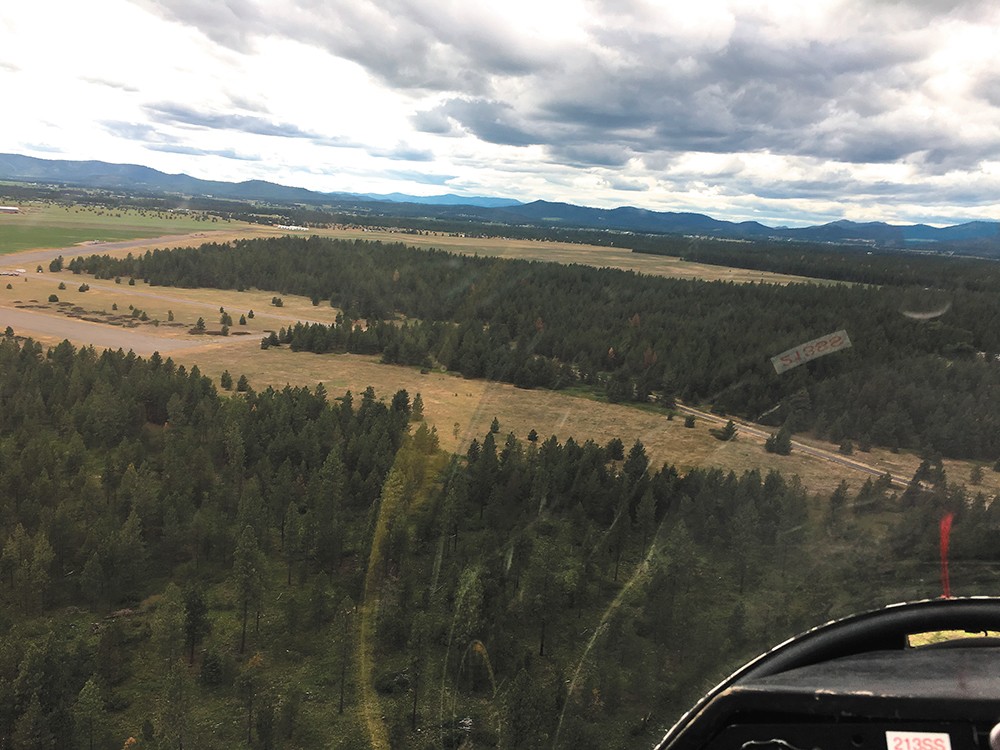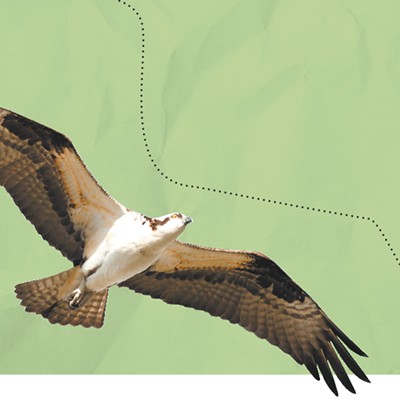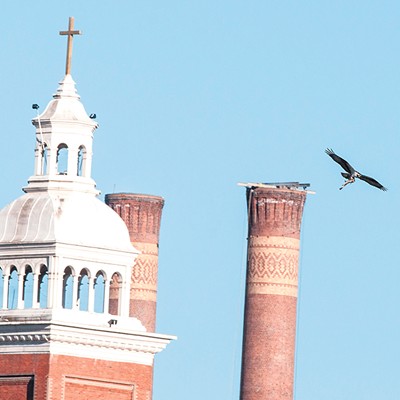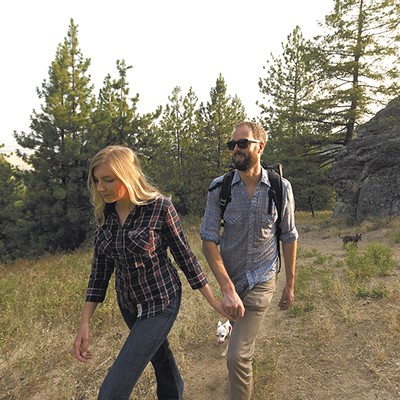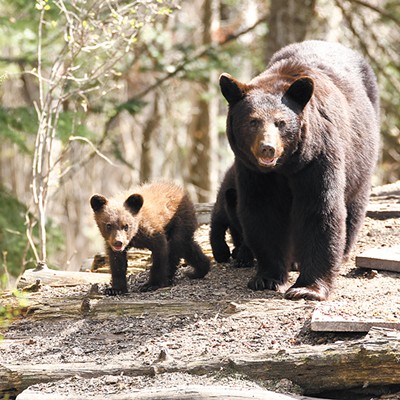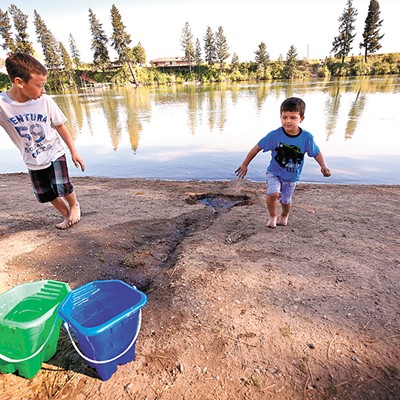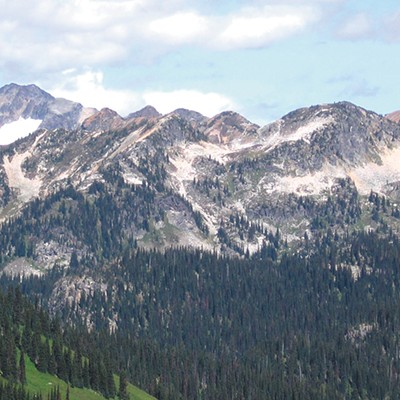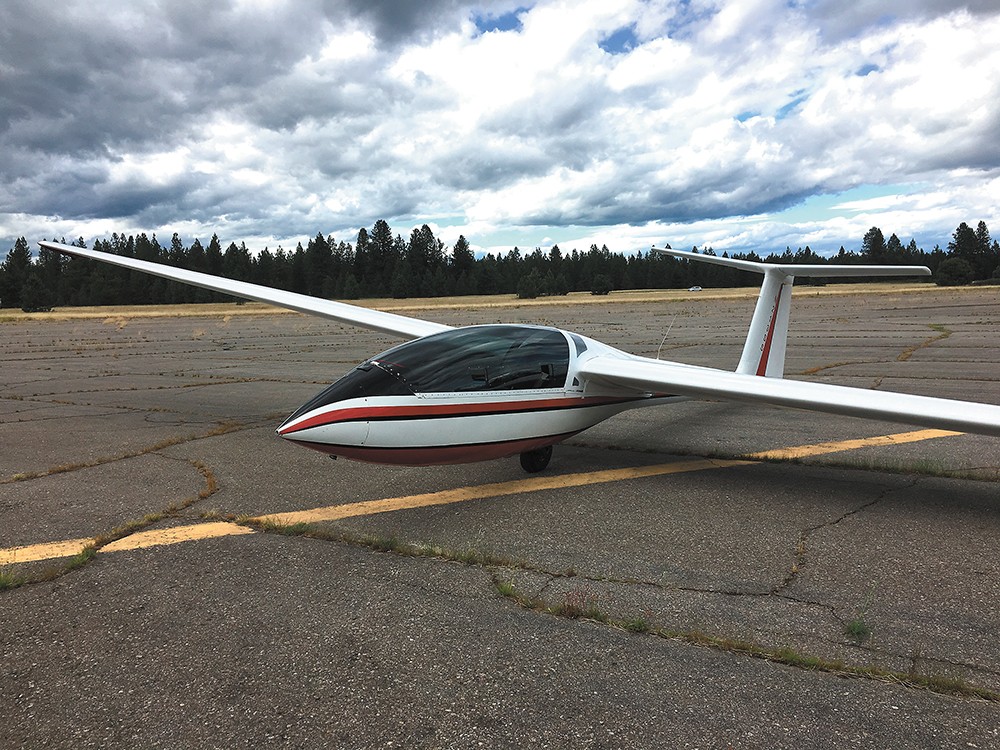
It wasn't until I watched the 200-foot rope drift out of view — the only lifeline about 4,000 feet above the ground — that the reality of what I'd just done hit me. The retired crop-duster plane now veering left out of view, carrying the rope with it, had just launched us like a paper airplane over the Deer Park Golf Club. For the first time in my life, I was flying without the help of combustion, propellers or a balloon filled with hot air. Along with my co-pilot, Dave Varnam, I was flying without a parachute in an aircraft without an engine.
As we soar over the golf course and high school football field, Varnam points out Loon Lake to the west, and Mount Spokane to the east.
"We'll see if we can't find an updraft," he says. "To gain some altitude."
It's unsafe to do any acrobatics this close to the ground or without a chute.
Varnam, who has been fascinated with planes since he was a little kid, learned to fly in the Army while stationed in the Panama Canal Zone. He used his G.I. Bill to earn his commercial and flight instructor's licenses, and says he has taught people how to fly planes since 1957.
He moved to the area after retiring, and trained aspiring pilots at the Deer Park Airport — home base for the Spokane Soaring Society. About 10 years ago, the soaring club asked if he was interested in a gig as a tow pilot — the guy who flies the plane that launches the gliders. He got hooked, and soon after became a glider flight instructor.
With all that experience under his belt, I ask him: "What's the best tip you have for flying a plane with no engine?"
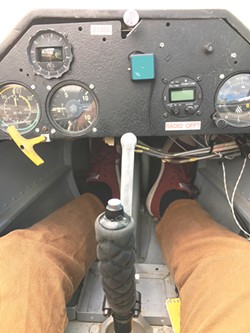
"Know your own limitations," he says. "And stay within them. A lot of accidents that happen, in a lot of different kinds of airplanes, are because people exceed their limitations."
He then asks me if I enjoy roller coasters.
"Sure," I tell him. "Does this thing do flips?"
He assures me that this particular glider is "fully acrobatic."
At takeoff, the two-person glider rises off the ground while the tow plane in front is still rolling down the runway. As we climb, both tiny aircraft jump and tilt, depending on the whims of the wind.
When we're finally high enough, Varnam tells me to pull the ripcord. We're on our own, and it feels as if the glider comes to a complete stop — suspended in midair. We are of course moving, just at a slower speed (about 65 to 70 mph), with nothing holding us up but wind and forward momentum.
About five minutes into the ride, Varnam takes a break.
"Grab the control stick," he tells me. "See if you can fly us toward Mount Spokane."
I strangle the stick and nudge it left, tilting the plane eastward. I press the pedals at my feet to straighten out. Varnam tells me to tilt the nose down slightly, and loosen my grip.
When he takes back control, I know what's next. Varnam's "roller coaster" question looms large in my mind.
"We're not quite high enough to do anything too exciting," he tells me. "But if you're up for it, we can do a little whoop-de-whoo."
I stammer out a response, and he points the nose of the glider toward the sky — then toward the ground. My stomach flips over twice before we straighten out. I imagine it's an uneventful maneuver compared to a full-on roll or flip, and Varnam's sage advice echoes in my mind. Fortunately, he knows our limitations.
By the time I've gotten over the fear that at any moment we could drop out of the sky, the ride is over. Varnam pulls the air brakes and settles the glider gently back on solid ground.
As glider trips go, mine was relatively short.
"Some guys in the club soar for eight or nine hours in a day without landing," says Robert Pintar, the Spokane Soaring Society's president and a licensed glider pilot.
Like Varnam, Pintar can also fly "power" planes (the ones with engines), and got into gliding as a challenge.
"Being able to fly without an engine, and manage the glider, requires skills that relate to other forms of aviation," he says. "Plus it's a lot quieter."
Indeed, when the initial terror of dropping right out of the sky subsides, a momentary sense of peace settles in.
It's calm up there.
As a person who loves roller coasters but who's not real fond of heights, gliding is an awesome experience.
"I would consider flying in a glider to be pretty safe," Pintar says. "Aside from the regular inherent dangers of being in an airplane, it's not any more unsafe than flying in a small power plane." ♦
Spokane's gliding club has about 30 members, including a couple of instructors. They can train aspiring pilots, and they offer rides to the public (spokanesoaring.org). Gliding season lasts from about mid-April until mid-October. Last year, the club completed about 300 flights, according to their Facebook page (facebook.com/spokanesoaring).

